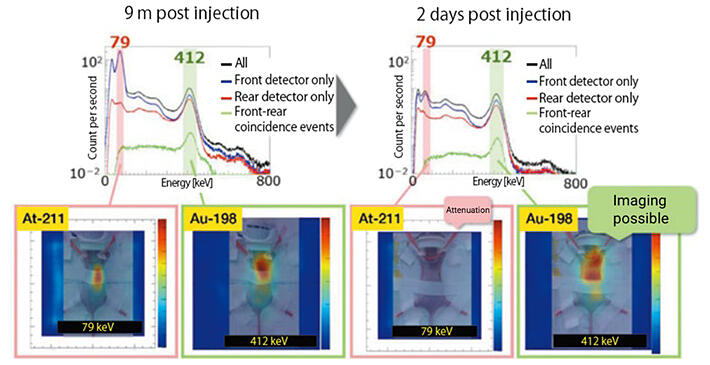Nuclear medicine therapy, which damages tumors by administering radioactive therapeutic agents, is gaining attention as a cancer treatment method that requires no surgery and has few side effects. Among these agents, astatine-211 (At-211), a radioactive element with mass number 211 that undergoes alpha decay, is considered promising as a therapeutic agent because it can easily be produced even with domestic cyclotrons, and research toward clinical applications is progressing. However, due to its short half-life of 7.2 hours and the fact that the intensity of X-rays emitted immediately after decay decreases to about 1/100th after two days, it has been impossible to track distribution and dynamics in the body over several days.
A research team led by Graduate Student Nanase Koshikawa from Waseda University Graduate School of Advanced Science and Engineering and Professor Jun Kataoka from the same university's Faculty of Science and Engineering solved this problem by devising a method to directly visualize the in-vivo distribution of gold nanoparticles that serve as drug carriers to deliver At-211 to tumors. The team synthesized particles with a diameter of 5 nanometers using gold-198 (Au-198), a radioactive isotope of gold with mass number 198. They combined these particles, which have a half-life of 2.7 days, with At-211, and measured the energy spectra of X-rays emitted by At-211 and gamma rays emitted by gold nanoparticles immediately after administration to mice (9 minutes later) and 2 days later, while also capturing two-dimensional images of each using a proprietary camera.
Nine minutes after administration, peaks of X-rays and gamma rays from At-211 and gold nanoparticles accumulated in the tumor were confirmed. Two days later, while X-rays from At-211 had attenuated, gamma rays from the gold nanoparticles could still be imaged, confirming that long-term tracking of gold nanoparticles is possible. This method enables investigation of the in-vivo distribution of various therapeutic agents, such as anticancer drugs, that could not previously be imaged, raising expectations for the realization of effective cancer treatment.
(Article: Masanori Nakajo)





